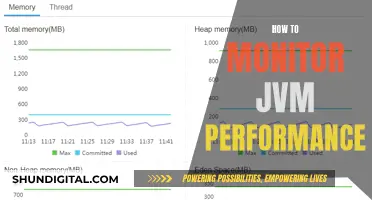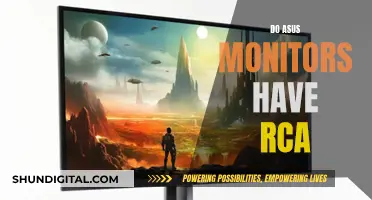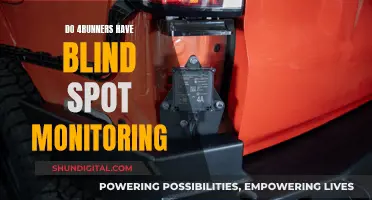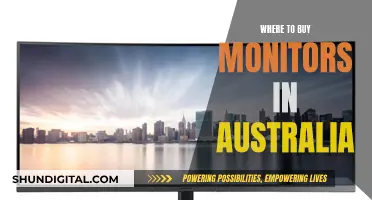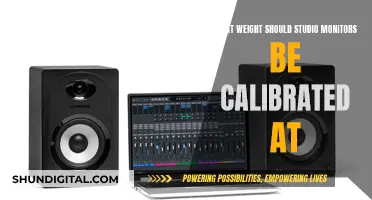
TFT stands for Thin Film Transistor and is used in conjunction with LCD (Liquid Crystal Display) screens to improve image quality. LCD screens are flat-panel displays that use liquid crystals to control the passage of light. They are thinner and more energy-efficient than older CRT monitors and are also used in televisions, computer monitors, mobile devices, medical devices, and aircraft. The addition of a thin-film transistor to an LCD design improves viewing angles and enhances image speed, eliminating blurring. TFT displays are made using large sheets of transistors, each of which is independently controlled, and are considered active matrix displays.
| Characteristics | Values |
|---|---|
| Full Form | TFT: Thin-Film Transistor |
| LCD: Liquid Crystal Display | |
| Display Type | TFT: Active-matrix screen |
| LCD: Flat-panel display | |
| Display Quality | TFT: Sharper, brighter, higher-quality, better colour reproduction and contrast than LCD |
| Power Consumption | TFT: Higher than LCD |
| Viewing Angle | TFT: Narrow |
| LCD: Wide | |
| Use Cases | TFT: Low-end phones, feature phones, smart feature phones, low-end Android phones |
| LCD: Most widely used display type in modern smartphones |
What You'll Learn

TFT is a type of LCD
TFT stands for Thin-Film Transistor, while LCD stands for Liquid Crystal Display. Both refer to electronic display technologies used in devices such as computers, TVs, and smartphones. LCD is a generic term, and TFT is a type of LCD.
TFT displays are a newer technology that offers several advantages over standard LCD screens. One key difference is that TFT screens are made by depositing the elements directly onto the glass substrate, rather than using the traditional method of producing silicon transistors. This results in improved image quality, colour reproduction, and contrast. TFT displays are also faster and brighter than regular LCD screens, providing a smoother viewing experience for multimedia content.
Another benefit of TFT technology is that it offers a wider viewing angle than standard LCD. This is due to the horizontal alignment of liquid crystals in IPS (In-Plane Switching) TFT displays, which allows for better angled viewing. However, this advantage comes at a cost—TFT displays consume more power than standard LCD screens, impacting energy efficiency and battery life, particularly in portable devices.
TFT displays are now commonly used in laptops, desktops, and mobile phones, where they offer improved responsiveness and image quality over standard LCD.
Monitoring Watt Usage: Outlet Power Tracking
You may want to see also

LCD was created to replace CRT displays
The Cathode Ray Tube (CRT) was the dominant display technology for several decades, until it was replaced by Liquid Crystal Displays (LCD) in the 2000s. The earliest CRTs were monochrome and were used in oscilloscopes and black-and-white televisions. The first commercial colour CRT was produced in 1954, and they remained the most popular display technology used in television sets and computer monitors for over half a century.
LCD is a more modern technology, which isolates the processes of light generation and modulation. LCDs use liquid crystals to form images, whereas CRTs use an electron gun. LCDs are smaller and have better image confinement than CRTs, and they can be used in a wider variety of devices, including personal computers, laptops, and cellular phones. LCDs also have higher resolutions, and do not suffer from image flickering. However, they are more expensive than CRTs, and have slower response times.
TFT stands for "thin-film transistor", and is a type of LCD. A TFT display is made using large sheets of transistors, each of which is controlled independently. This makes it an active-matrix screen, where each pixel is illuminated individually. As a result, TFT displays are brighter, sharper, and faster than regular LCD screens, and show motion more smoothly. However, they use more electricity, and are therefore more expensive to operate.
Asus Monitor Power Cord Length: How Long?
You may want to see also

TFT displays are made using large sheets of transistors
TFT stands for Thin-Film Transistor. It is a type of LCD (Liquid Crystal Display) and is used in flat panels to achieve high-quality liquid crystal displays.
TFT screens are an improvement on standard LCD screens, offering a range of advantages. They provide better image quality, colour reproduction, and contrast. They are also faster and brighter than regular LCD displays, with improved responsiveness and higher brightness and contrast.
TFT displays have wider viewing angles than standard LCD screens, making them less prone to colour inversion when viewed from different directions. This is due to the horizontal alignment of the liquid crystal elements, which only switch on when powered on. In comparison, the liquid crystal elements in standard LCDs are arranged vertically, blocking some light when viewed from different angles.
TFT screens also have faster response times, making them suitable for displaying fast-paced multimedia content without ghosting or blurring. However, a drawback of TFT technology is that it consumes more power than standard LCD screens, resulting in decreased energy efficiency and shorter battery life in portable devices.
ViewSonic, ASUS, or AOC: Which Monitor Brand to Choose?
You may want to see also

LCD uses liquid crystalline compounds to produce images
Liquid Crystal Displays (LCDs) are flat-panel displays that use the light-modulating properties of liquid crystalline compounds to produce images. LCDs are made up of several layers, including a backlight, polarizers, and colour filters. The liquid crystal layer is sandwiched between two polarising filters, which are oriented at 90 degrees to each other. This layer is made up of numerous tiny cells filled with liquid crystals, which have the fluidity of a liquid but are arranged in a crystal-like way.
When an electric current is applied to these liquid crystals, their molecular structure changes, altering the way light interacts with them. This change in structure causes the crystals to twist and untwist, allowing light to pass through and creating the images we see on the screen. The degree to which the crystals twist is determined by the voltage applied, which in turn controls the amount of light that passes through each sub-pixel, producing a full spectrum of colours.
LCDs can be found in a wide range of applications, including televisions, computer monitors, smartphones, digital cameras, and watches. They are known for their compactness, low power consumption, and excellent colour accuracy.
Choosing the Right-Sized Drawing Tablet Monitor for You
You may want to see also

TFT displays are more expensive
TFT screens are also more expensive to operate. They use more electricity than regular LCD screens, which impacts the running costs of the device.
TFT displays are also more expensive to manufacture. This is because they require a very small amount of charge to get activated, whereas LCD displays require a much larger amount of charge. This means that TFT displays are generally reserved for higher-quality devices, such as laptops, or higher-end mobile phones.
The high cost of TFT displays is somewhat justified by their superior performance. They are brighter, have faster refresh rates, and offer improved colour reproduction and contrast when compared to standard LCD screens.
Aligning Monitor Backgrounds: Size Harmony for Your Display
You may want to see also
Frequently asked questions
TFT stands for "thin-film transistor". It is a type of LCD (liquid crystal display) that uses thin-film transistor technology to deliver sharper, brighter images with better colour reproduction and contrast than standard LCD screens.
LCD stands for "liquid crystal display". It is a flat-panel display technology that uses the light-modulating properties of liquid crystalline compounds to produce images on the screen. LCDs are energy-efficient, thin, and lightweight.
TFT monitors offer improved image quality, colour reproduction, and contrast compared to standard LCD screens. They also have wider viewing angles and faster response times, reducing blurring and ghosting. However, TFT technology consumes more power, making it less energy-efficient and leading to shorter battery life in portable devices.


